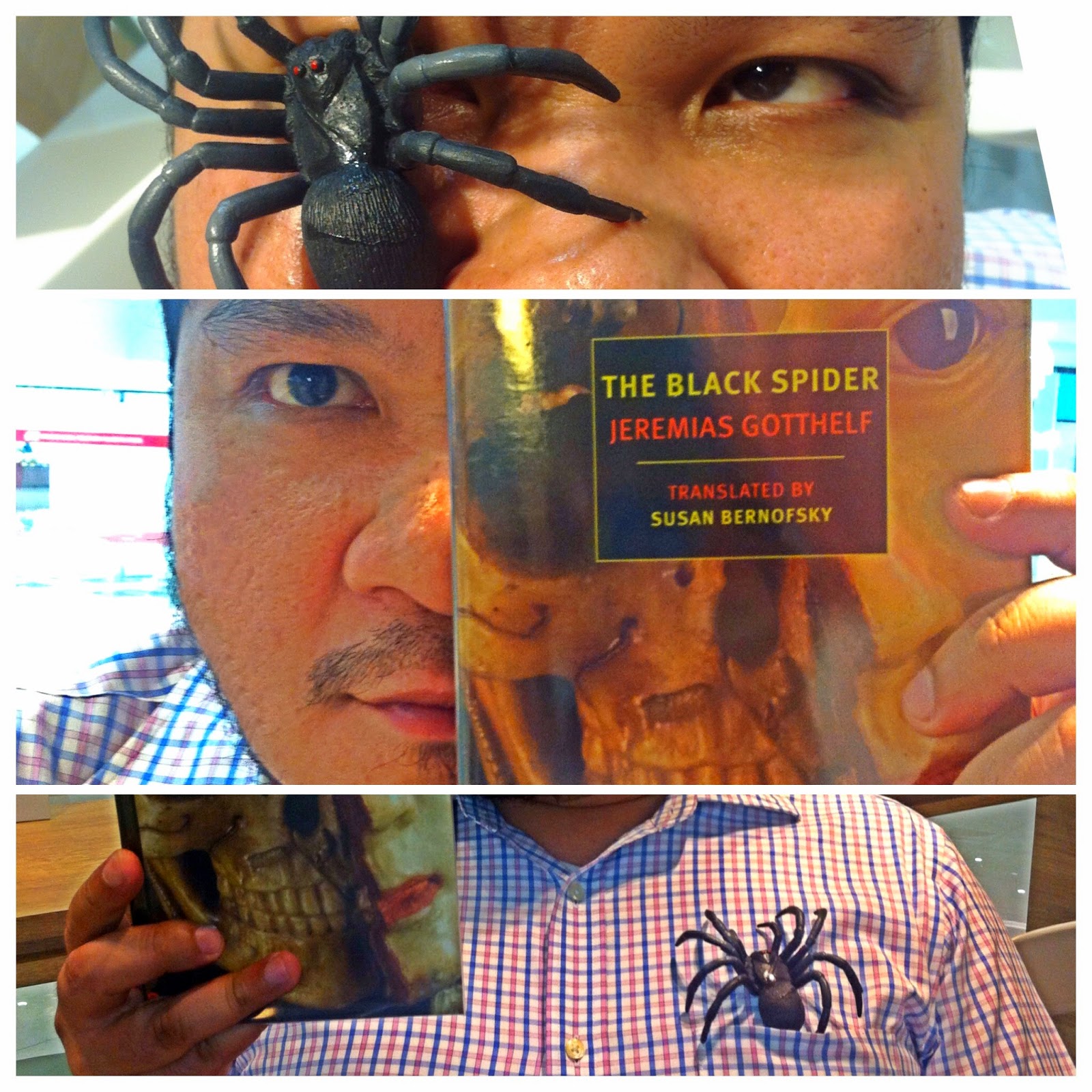So I turned 40 last St. Patrick's Day, and I decided to celebrate it away from Manila. So off I went to the Singapore with R. and a couple of other friends. I've been to the Lion City so many times for work-related stuff, but this is the first time I went there purely for some R&R. The trip also marks the second time I travel abroad with R.
Singapore is very friendly to bibliophiles. Lots of awesome bookstores. Some bookstores in Manila may be having financial troubles, but they seem to be thriving in the Lion City. I see people reading everywhere—trains, cafés, restaurants, and parks. I visited 4 bookstores in Singapore, and I saw that there's always a line at the cashier.
The first bookstore that we visited was BooksActually. Their flagship store is in the trendy Tiong Bahru district, which is lined with artsy eating places and other hipster-friendly establishments. It's actually my 2nd time to be in BooksActually, and I was looking forward to getting more Penguin mugs. Unfortunately, they ran out of them.
BooksActually is such a quaint bookstore that I've fallen completely in love with it. The staff's friendly and accommodating, and their selections are awesome. But like most bookstores in the city, their books can be quite pricey. I drooled over their collection of vintage Penguin paperbacks. In the end though, R. bought me a Jane Eyre tote.
The 1st time I was in BooksActually, I never thought that there's be non-humans living inside the store. So I was surprised when this cat suddenly appeared out of nowhere and just contentedly settled himself on top of the piles of books. We learned that the cat's name is Cake, and that there were 2 more cats hiding in the bookstore.
The 2nd bookstore we went to was just a few stores away from BooksActually—Woods in the Books. It's more of a specialty bookstore, stocking only children's books. So lots of picture books in that store. Again, still pricey. And boo-hoo, they don't allow people to take pictures inside the store. Still a good place to visit though.
It was a rainy afternoon when we went to Tiong Bahru. We couldn't get a cab, and we couldn't possibly walk to the train station without getting terribly wet. So we whiled away the time in this coffee shop called Poteato, where 2 of the staff were Filipino. Very friendly bunch. And they had the best white chocolate cheesecake ever!
As soon as the rains stopped, off we went to Orchard Road, where one of my favorite bookstores can be found in Takashimaya mall—Kinokuniya! Oh, Kinokuniya, why can't I quit you? You breaker of budgets, you destroyer of wallets. I think I might have browsed the shelves of the fiction section of Kinokuniya no less than 3 times.
When we left Orchard Road to have dinner, I had 4 new books in my backpack. Yes, only 4. Because, I repeat, books in Singapore are pricey. I had to make sure to get those titles that bookstores in Manila wouldn't have. Was thinking if I should get the hardcover cloth-bound Penguin classics. I held off though, as I wouldn't want to pay for excess luggage.
And then the last bookstore we went to was Relay, which was at the airport. Compared to BooksActually and Kinokuniya, Relay carries fewer titles. But they do have those beautiful Irish editions of classics, which were also reasonably priced. I bought 2—
Heart of Darkness and
To the Lighthouse. Woolf is my planned W in my
dead guy challenge.
So it was a very enjoyable trip, undoubtedly. I went back home with 6 new books, and my luggage was within the 15-kilo limit. (My check-in luggage weighed 14.7 kilos. Yay!) Of course, the 1-week trip didn't just involve book-hunting. We naturally had to act all touristy and see the usual sights. Till next time, Singapore!
 |
| My stash |

































